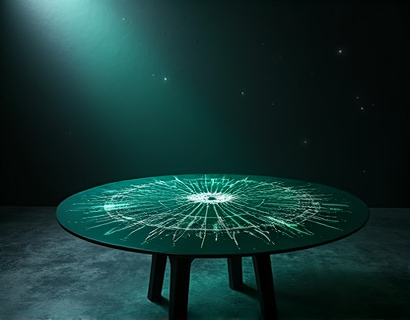Uncovering the Secrets of the Indus Valley Civilization: A Journey into Heritage and Modern Inspiration
The Indus Valley Civilization, one of the oldest and most advanced urban cultures of the ancient world, continues to captivate historians, archaeologists, and cultural enthusiasts alike. Spanning from around 3300 BCE to 1300 BCE, this civilization thrived in the Indus River Valley, covering parts of present-day Pakistan and northwestern India. This article delves deep into the rich heritage of the Indus Valley Civilization, exploring its urban planning, social structure, art, and the exclusive artifacts that offer profound insights into this enigmatic culture. For history enthusiasts and cultural scholars, this journey promises to be an enlightening exploration of one of the world's most fascinating ancient societies.
Urban Planning and Infrastructure
The cities of the Indus Valley Civilization, notably Harappa and Mohenjo-Daro, are renowned for their advanced urban planning and sophisticated infrastructure. The layout of these cities demonstrates a high level of organization and foresight. Streets were laid out in a grid pattern, with broad avenues and narrow lanes, ensuring efficient movement and drainage. Houses were built with baked bricks, a testament to the advanced kiln technology of the time. Each house had its own bathroom and drainage system, connected to a central sewage network. This level of urban planning was unprecedented in the ancient world and sets a standard that modern cities still strive to match.
The importance of water management in these cities cannot be overstated. The discovery of sophisticated drainage systems, wells, and reservoirs indicates a deep understanding of hydrology. The Great Bath in Mohenjo-Daro, a large public bathing facility, showcases the civilization's emphasis on cleanliness and ritual purity. This structure, along with numerous smaller baths found in private homes, suggests that water played a crucial role in both daily life and religious practices.
Social Structure and Economy
The social structure of the Indus Valley Civilization is still a subject of debate among scholars, but evidence suggests a relatively egalitarian society. The absence of grand palaces or temples, which are common in other ancient civilizations, indicates that power was likely distributed among a council of leaders rather than a single ruler. The uniformity in the size and quality of houses across the cities further supports the idea of a society with minimal social stratification.
Trade was a vital component of the Indus economy, with extensive connections to Mesopotamia, Egypt, and other regions. The discovery of Indus seals and artifacts in distant lands attests to the reach of their trade networks. The civilization's currency, if any, was likely based on weight and standardization, as evidenced by the numerous weights and measures found at archaeological sites. This standardization facilitated trade and commerce, contributing to the prosperity of the cities.
Art and Craftsmanship
The art and craftsmanship of the Indus Valley Civilization are remarkable for their precision and creativity. Small figurines, often made of clay or steatite, depict a variety of subjects, including animals, humans, and deities. The famous "Dancing Girl" and "Priest-King" figurines are prime examples of the civilization's artistic prowess. These figurines not only showcase the skill of the artisans but also provide insights into the social and religious practices of the time.
Jewelry and personal adornments were also highly developed. Beads made from various materials such as carnelian, lapis lazuli, and shell were crafted with intricate designs. The use of these materials indicates long-distance trade and a sophisticated understanding of materials and techniques. Seals, often featuring animals and script, were used for administrative and commercial purposes, demonstrating the civilization's advanced bureaucratic systems.
Script and Language
One of the most intriguing aspects of the Indus Valley Civilization is its script, which remains undeciphered. Over 400 distinct signs have been identified, inscribed on seals, pottery, and other artifacts. Despite extensive research, the language and its meaning remain a mystery, adding to the allure and enigma of this civilization. The script's undeciphered nature has led to various theories, including the possibility that it was a proto-Dravidian language or a completely unique system. The lack of bilingual inscriptions, which could have aided in decipherment, further complicates efforts to understand this script.
Religion and Beliefs
Religious practices in the Indus Valley Civilization were likely diverse and complex, though much remains unknown due to the lack of written records that provide clear religious context. However, archaeological findings offer valuable clues. The presence of numerous small altars and the Great Bath suggests a strong emphasis on ritual purity and water-based rituals. Some scholars propose that the civilization had a form of ancestor worship or a nature-based religion, with deities associated with animals and natural elements.
Figurines of what appears to be a mother goddess, often seated with outstretched arms, are common and may indicate a matriarchal or goddess-centered aspect of their religion. The absence of large temples or monuments dedicated to specific deities, unlike in other ancient cultures, suggests that religious practices were more decentralized and possibly integrated into daily life and household rituals.
Decline and Legacy
The decline of the Indus Valley Civilization is a topic of much speculation. Climate change, environmental degradation, and shifts in river courses are among the leading theories. Some researchers suggest that invasions by Indo-Aryan tribes may have played a role, though this remains controversial. Regardless of the exact causes, the civilization's decline around 1300 BCE marked the end of an era, but its legacy continued to influence subsequent cultures in the region.
The Indus Valley Civilization left an indelible mark on the cultural and technological development of South Asia. Its advanced urban planning, sophisticated craftsmanship, and trade networks laid the foundation for future civilizations. The civilization's emphasis on hygiene, standardization, and social equality offers valuable lessons for modern society. Today, the artifacts and insights from this ancient culture continue to inspire and educate, bridging the gap between the past and the present.
Exclusive Artifacts and Insights
For those eager to delve deeper into the Indus Valley Civilization, a wealth of exclusive artifacts and insights await. From finely crafted beads to intricately designed seals, each artifact provides a unique window into the daily life and beliefs of this ancient people. Museums and archaeological sites offer a glimpse into the sophisticated world of the Indus, but for true enthusiasts, the journey does not end there.
Replicas and high-quality reproductions of these artifacts are available, allowing enthusiasts to bring a piece of history into their homes. These items, ranging from miniature replicas of the Great Bath to detailed reproductions of jewelry and seals, serve as tangible connections to a civilization that thrived over 5,000 years ago. Each piece is crafted with meticulous attention to detail, ensuring authenticity and educational value.
Additionally, educational resources such as books, documentaries, and interactive exhibits provide comprehensive insights into the Indus Valley Civilization. These resources cover various aspects of the culture, from urban planning to religious practices, offering a holistic understanding of this enigmatic society. For those interested in a more immersive experience, guided tours and archaeological excavations offer the opportunity to explore the sites where history was made.
In conclusion, the Indus Valley Civilization remains a fascinating subject of study and admiration. Its advanced urban planning, sophisticated craftsmanship, and mysterious script continue to captivate and inspire. By exploring the exclusive artifacts and insights available, history enthusiasts and cultural scholars can deepen their understanding of this remarkable civilization and appreciate its enduring legacy.










































